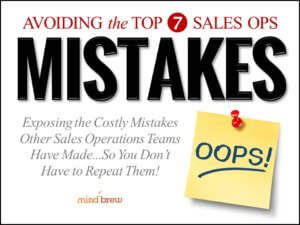In certain sectors, there’s been so much turmoil, upheaval, and change recently that many groups have come to suspect…and rightly so…that their segmentations may no longer be accurate reflections of the dynamics and structure of their marketplace. As a result, we’ve been fielding a number of questions through the Help Desk about when it’s most appropriate and necessary to revisit ones segmentation models and make modifications.
The short answer is that you should be revisiting your segmentation models on a regular basis even in relatively “normal” times, let alone when there’s been major market turmoil and economic disruption.
We recommend that you address the segmentation topic on a quarterly basis at a minimum.
Now, we’re not talking about performing a full-scale reassessment and rework exercise on a quarterly basis. We’re just saying that you should talk about it on a quarterly basis and determine what…if any…action might be warranted with respect to your segmentations models.
In most quarters, these reviews and discussions will conclude with a determination that your current models are still just fine and dandy, and that no major changes are necessary. In some quarters, however, you’ll likely identify some small tweaks and minor modifications that can help make your segmentation models even more accurate, relevant, and effective.
And should the “stuff” really hit the fan in your particular sector or market, this quarterly checkpoint can help you be more proactive and timely about recognizing the need for more in-depth reassessment and identifying where more significant rework is actually necessary and warranted.
Under relatively normal and stable dynamics, the structural aspects of most markets don’t typically change all that quickly. But in times of disruption and turmoil, structural changes tend to accelerate—i.e. major changes to business models, dramatic shifts in consumption patterns, new and innovative competitive alternatives, and so on.
No matter what the dynamics may be, a quarterly segmentation review is a simple and straightforward way to provide some insurance against obsolescence.
All that being said, addressing any of the structural changes that may have occurred in your marketplace is not actually the most important reason to revisit your segmentation models on a regular basis.
Rather, the most important aspect of regularly revisiting your segmentations has to do with reassessing your strategic priorities. After all, no matter what’s going on in the broader marketplace, your business is going to be changing all the time—new people, new products, new ideas, new strategies, new goals, new directions, etc.
And as a result, your strategic priorities can change at any time.
So as you review your segmentations on a quarterly basis, you’ll not only want to ask questions about the structure of the models themselves, you’ll want ask questions about the relative strategic importance and value of the segments described therein.
Are your designated priority segments still the priority segments? Or given your company’s current plans and objectives, does it now make more sense to prioritize other segments? Has your strategy as a business now changed to the point where your perspectives as to which segments are truly strategic…and which are not…also needs to change?
Again, this doesn’t have to be a wholesale rework of your strategic prioritizations on quarterly basis. It’s a review. It’s a checkpoint. On a quarterly basis, you just want to make sure that your segment-level “bookends”—i.e. the most important segments versus the least important segments—are still clear, relevant, and appropriate for your company’s current plans and objectives.













